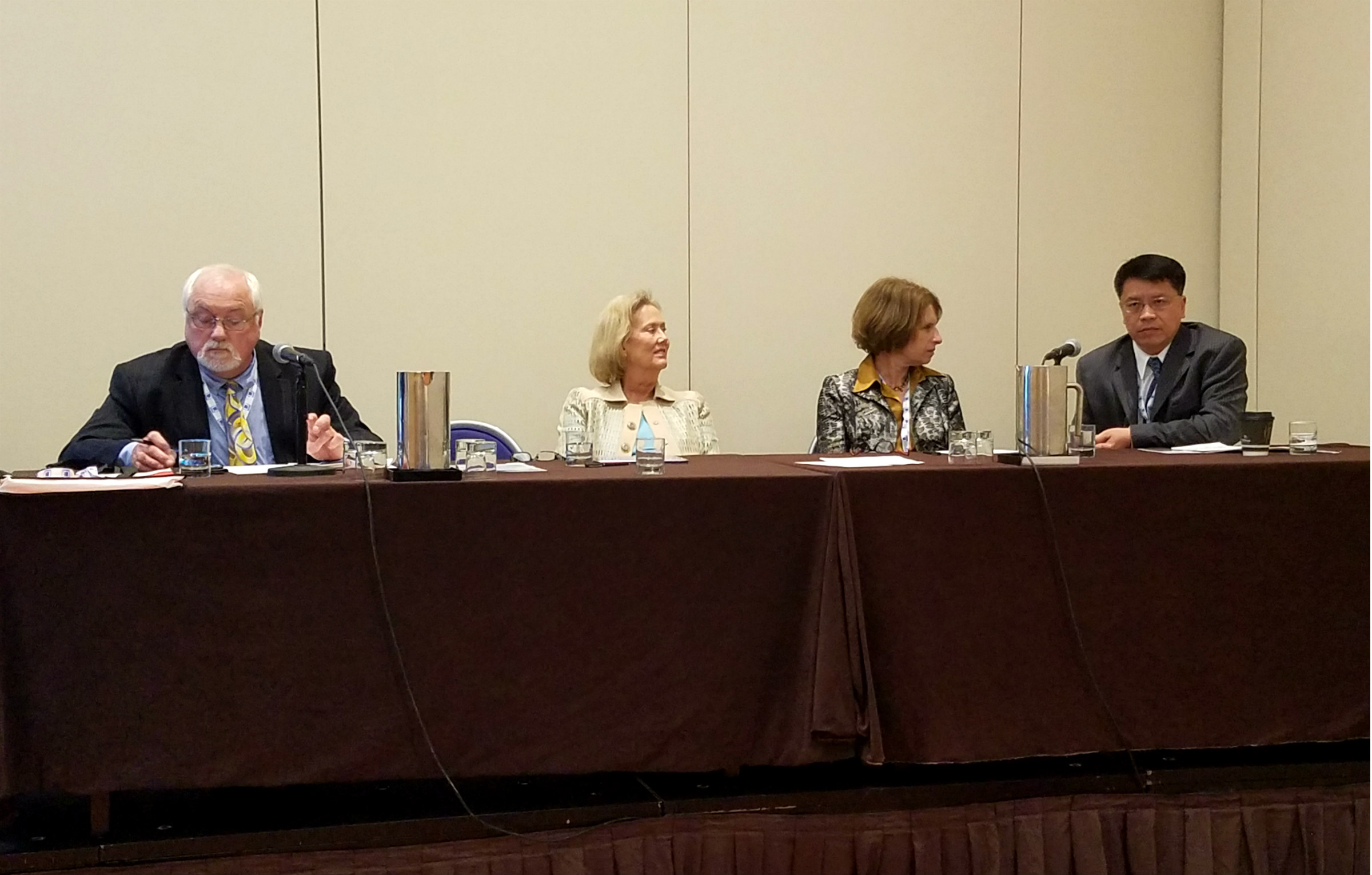BALTIMORE — People from Texas, California and New York may not agree on much, but representatives from organizations in all three states were united on the importance of working as a global society to increase diversity in STEM fields.
Telle Whitney from the California-based Anita Borg Institute, Yeping Li from Texas A&M’s College of Education and Human Development and Lorraine Hariton from the New York Academy of Sciences spoke Thursday at the U.S. News STEM Solutions Conference about the challenges facing the science, technology, education and math fields on an international front and what is being done to overcome them.
Whitney, the president and CEO of Anita Borg, says that the situation for women in STEM differs from culture to culture, but that one commonality is that it’s difficult to stay in those fields when there is nobody else who looks like you.
“What’s most important is that in all these cities, there are women and students who yearn for others who look like them,” Whitney says. “So we provide a way for them to come together.”
Li is a professor at Texas A&M who has also taught in China, where he grew up and received his education. One difference he has noticed between students in the countries is the way they question things. He says that while students in China thing about why an answer is correct, students in the U.S. consider why they are learning math. He considers them both smart but says they think about learning differently.
One thing Li thinks can be done to up the quality of education across the board is open classrooms to other teachers and educators so they can benefit from each other.
“Like the small mouse who can cook in the movie, everyone can teach,” Li says, referring to the movie “Ratatouille.” “We can find teachers in every state and every school district. But how will we know who is a great teacher if we don’t open the classroom?”
Hariton is the New York Academy of Sciences’ senior vice president of Global Partnerships and a veteran of the State Department. She says that the Academy did a study on why “we’re graduating [a good number of] kids in STEM, but there’s still a hole in the pipeline,” to employment. The results showed that one of the reasons is that just knowing how to program doesn’t necessarily make a great employee.
That was a major driver in some of the Academy’s current initiatives. As part of the Global STEM Alliance, they have the goal of impacting 1,000,000 children in 100 countries by 2020. There is a focus on informal learning and mentorship.
One program is “1,000 girls, 1,000 futures.” It is comprised of remote one-on-one mentorships between mentors and girls in countries all over the world.
Other stats and takeaways:
- *According to Whitney: in Canada, 27 percent of computer science jobs are held by women; in the U.S., it is 23 percent; in Europe, it varies country to country, but overall it is 20 percent.
- *Hariton says research has shown that “the first thousand days of a child’s [life] makes a big difference. By the time they get to preschool, even, a lot of the patterns are set. So the earlier you can get to children [with STEM education], the better.”
- *According to Li: There are 3.8 mil teachers, which makes it the largest profession in the nation. There are 2,100 teacher preparatory institutions and agencies.
- *Per Li: The annual salary of pre-K through 12th-grade teachers was $55,000 in 2011.More than 50 percent of students in Texas are Hispanic. Ten years ago, Li says, less than 5 percent of the students graduating from Texas A&M’s Education school were black or Hispanic. He says that while current enrollment has tripled, the disparity between teachers and students in Texas means that more needs to be done.


